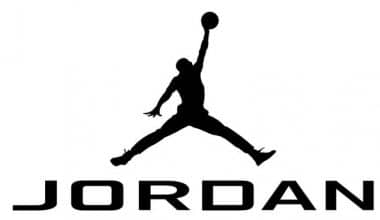Walgreens started out as a small business and has grown to become the second-largest chain of pharmacies in the United States. Its logo is one of the pharmaceutical industry’s most recognizable visual icons. In this article, we’ll discuss the history and evolution of the Walgreens brand logo.
History of The Walgreens Logo
Charles Walgreen established Walgreens as a tiny business in 1901. The first logo for the company was very clean and straightforward. It was the corporate name in a bespoke grey handwritten font created just for Walgreens. The original logo had been in use for a whopping 50 years. However, as the company grew, it necessitated adjustments to its brand identification.
Walgreens is the second-largest pharmacy business in the United States. Already in 2010, the corporation controlled more than 7.5 thousand pharmacies across all 50 states, and its current total approaches 9 thousand.
The company’s primary operation is the manufacture and marketing of pharmaceuticals and medical devices. Furthermore, specialized Walgreens stores operate in the US market, with a product line that includes general consumer products, personal care products, vitamins, and eyesight correction products.
Evolution of The Walgreens Logo
Walgreens painted its logo red in 1951 to make it more noticeable. The design also includes a blue pestle and mortar and the slogan “The Pharmacy America Trusts.” Walmarts intended to demonstrate its preparedness to accommodate every customer requirement in terms of medications with its new engaging logo.
In 1983, Walgreens introduced a new logo. The pestle and mortar were red-painted and repositioned at the top of the emblem. The slogan, on the other hand, was dropped. The symbol lost all of its graphical features in the early 2000s, except for the brand name, which was significantly revised and optimized for digital devices.
The modern Walgreens logo sticks out with its tidy, rounded typography and vibrant red color scheme. Also, have you ever noticed that there is a small space between the letters “g” and “r”? The corporation also has a simplified logo that only has the letter “W” on it. It does, however, occasionally cause confusion.
A Breakdown On The Evolution Of The Walgreens Logo
1921 – 1929
The Walgreen wordmark was originally composed of black, creative serif characters with several disproportioned, soft curves. A white illustrated ribbon said ‘drugs with a reputation in a more typical font beneath the writing ‘Walgreen Co’ constructed from these uppercase letters.
1924 – 1925, 1928
That was the secondary form of the old logo, and it looked almost identical. The ribbon ends were a little longer, and the lower writing was done in a different style, but that was it.
1929 – 1931
They replaced the old cursive typeface with a new one in 1929. The upper text appeared to be handwritten, with lower- and uppercase letters all in black. The lower section uses a stronger typeface and just capital letters than before. The ribbon had also been flattened.
1931 – 1932
The logo employed the wordmark ‘Walgreens’ in the same style as the previous design, but with significant alterations and a possessive ending.
1933 – 1938
The 1933 wordmark is similar to the previous main iteration (1931-1932), but it lacks the possessive ending (simply ‘Walgreen’). This time, the coloration is blood-red with black outlining. A grey cup with a snake curled around it (the emblem of medicine) lies behind the wordmark, as does additional text at the bottom that says ‘drug store’ in a simpler typeface.
1938 – 1948
The new variant has a similar inscription to the previous one, but with a lower ‘W’ and a shorter tail on the ‘g’. They also went back to a black color and removed all of the other aspects.
1946
Walgreens created a distinctive Christmas logo in 1946. It had their standard wordmark (written as ‘Walgreens’), followed by smaller, more traditional writing that said ‘your Christmas gift shops’ underneath. Both elements of the text were in white and were on the right side of a black rectangle. Christmas bells occupied its left side.
1948 – 1960
The following emblem’s wordmark has been modified to a cursive design, but the letters have also been skewed to the right. Furthermore, just below the main wording is an inscription that says ‘drug stores’ in capital sans-serif characters.
1948 – 1955
The same main wordmark is used in this secondary logo, but with an added possessive ending (‘Walgreens’) and without the ‘drug stores’.
1955 – 1960
They altered that version in 1955 by making it paler and removing the apostrophe (but not the letters).
1960 – 1981
Surprisingly, the second iteration of the secondary logo was made the next primary symbol, albeit in a darker color scheme.
1981 – 1991
A new element was added to the Walgreens logo in 1981: a picture of a family.
1990 – 1992
They just used the old 1960 logo and put the standard “drug stores” caption beneath it.
1992 – 2005
In 1992, the company unveiled a new logo with a red wordmark and a representation of a mortar and pestle. The mortar turned red and was positioned atop the insignia in 1983.
According to the corporation, the preferred version of their logo is the brandmark paired with the phrase, which should be put beneath it. However, in other cases, the brandmark may be used alone, or the location of the tagline may be altered.
The Walgreens icon is another fascinating variation. It is formally known as the “Corner W icon,” and it is utilized when a smaller visual element would be more useful. It can be used alone or in conjunction with a headline. There are two color schemes for the icon: white and red or white, red, and blue. It may also be available in a color-gradient variant.
2005 – 2020
The cursive lettering has been maintained in the Walgreens logo, but the mortar has vanished. The letters have been simplified and expanded.
If you’ve ever seen the logo that Rochester-based Wegmans started using in 2008, you might have recognized the resemblance to Walgreens’ “Flying W.” That is what prompted Walgreens to sue Wegmans in 2010. However, Wegmans maintained that they used one of their old logos from the 1930s, which was designed considerably older than the Wegmans’.
2020 – Today
They kept their long-standing wordmark, although in a much softer shade of red this time.
Font of The Walmart Logo
The Walgreens logo has a lovely script. As a result, the wordmark appears to be handwritten.
Color of The Walmart Logo
Red and white are the primary colors (for the background). The phrase is written in black, green, and blue.
Differences between the Walgreens and Washington Nationals logos
The Walgreens logo resembles the Washington Nationals logo. To be fair, it should be noted that the Nationals logo was not created until 1963. There is a brief guide sheet for distinguishing between the two:
- The end of the letter “W” in the Nationals logo points down, but it looks more like a wave in the Walgreens design.
- On the Nationals logo, the middle section of the letter “W” is slightly wider.
- The Nationals logo appears to be rising, whilst the Walgreens logo remains static.
- Unlike Walgreens, the Nationals design is also available with thin lines.
History of The Walgreens Brand
Walgreens, America’s largest pharmacy company, dates back to 1901 when Charles R Walgreen bought out his employer and established himself under his own name in Chicago’s wealthy South Side. He trained as a pharmacist, mixing and packing his own medications to assure their quality and price. He joined the soda fountain frenzy, making drinks and ice cream in the summer and soups and sandwiches in the winter with his wife.
By 1925, Walgreen had over 65 locations and had expanded to Milwaukee, St. Louis, and Minneapolis. He went public two years later, and by the time the Great Depression hit, Walgreens had over 500 locations from New York to Florida. It countered the economic downturn by selling own-brand products, radio advertisements, and bootleg whisky. Walgreen’s firm was passed down to his son after his father died in 1939. Sales had topped $1 billion (£639 million) by 1975, and the 1,000th Walgreens location opened in 1984. A succession of acquisitions followed, but they were limited to the United States and Puerto Rico until recently.
What Was Walgreens Original Name?
Walgreens was originally named Walgreen Drug CO.
Why Did They Name It Walgreens?
It was named Walgreens because the name made the business stand out in the market.
Facts About Walgreens
Walgreens is a major player in the pharmaceutical industry.
The official name of the chain’s holding company is Walgreens Boots Alliance, and it operates thousands of stores. People all over the world rely on these pharmacies for everything from prescription drugs to flu shots.
Here are a few facts that demonstrate Walgreens’ massive size:
- Walgreens was first founded in 1909, although it had a predecessor that launched eight years earlier.
- In the fiscal year 2018, Walgreens filled a total of 1.1 billion prescriptions, adjusted to 30-day equivalents, according to the company’s most recent SEC filing.
- A pharmacist works at an internal pharmacy run by Walgreens at a Cisco health clinic at Cisco Systems in San Jose, California, U.S., March 22, 2018
- Six million customers visit Walgreens every day, while two million people check out the company’s various “digital properties,” according to a spokesperson.
- Walgreens Boots Alliance, the holding company that owns Walgreens, boasts a total of 18,500 stores in 11 countries, as well as 390 distribution centers that cater to 20 countries.
- In the United States, the holding firm operates 9,560 Walgreens and Duane Reade locations…… and 4,767 stores outside the United States, including the Boots, Benavides, and Ahumada chains.
- If you live in the United States, you’re probably not far from Walgreens. Approximately 78% of the population “lives within five miles” of a Walgreens, Duane Reade, or Walgreens-owned Rite Aid.
- As of August 31, 2018, Walgreens Boots Alliance employs over 354,000 individuals.
- In addition, “85,000 healthcare service professionals, including pharmacists, pharmacy technicians, nurse practitioners, and other healthcare workers” are employed by the corporation. These employees and third-party partners are a mix.
- To date, Walgreens has collected and safely disposed of almost 1.2 million pounds of old or unwanted pharmaceuticals.
- Through their ‘Get A Shot. Give A Shot.’ initiative, the firm has “given more than 34 million life-saving immunizations for children around the world by working with the UN Foundation.”
Competitors of Walgreens in 2023
CVS Health is Walgreens’ main opponent, and CVS will continue to be America’s largest pharmaceutical company in 2023. Walgreens’ competitors include Rite Aid, Target, Walmart, and Kroger. All of these businesses provide prescription services as well as regular items to customers. In addition, Walgreens faces competition from Express Scripts, which Cigna purchased in 2018.
Here is a general overview of Walgreen’s competitors:
#1. CVS Pharmacy
CVS is Walgreens’ main competitor, and it is also the largest drugstore chain in the United States, with 9,954 stores across the country.
Furthermore, CVS Health reported revenue for 2020 of $268.7 billion, which is significantly larger than Walgreens!
Furthermore, CVS provides the same services as Walgreens, such as:
- Pharmacy services that include delivery
- 24-hour service (some locations)
- Services for photo labs
- Section of retail
#2. Rite Aid
With 2,427 sites in 17 states, Rite Aid is a drug store business in the United States that competes with Walgreens.
It also competes with Walgreens in pharmacy services, including mail-in and pickup, as well as health, beauty, and picture services, as well as a small retail portion in its locations.
Furthermore, Rite Aid estimated that revenue will exceed $21.928 billion in 2020.
#3. Kroger
In terms of revenue, Kroger is the largest grocery chain in the United States. As a result, in pharmacy services and general merchandise, it competes with Walgreens.
Currently, there are around 3,000 Kroger locations across the country, and almost all of them have a pharmacy to service clients.
Furthermore, Kroger has a prescription drug discount and a selection of healthcare products in its shops, which will save you money if you don’t have insurance or are underinsured.
In addition, Kroger reported $132.5 billion in revenue for 2020, which is less than Walgreens. Walgreens, on the other hand, has a smaller product range in its locations overall.
#4. Walmart
Walmart is a massive retail firm that competes with Walgreens in pharmacy services as well as other household goods.
Furthermore, when it comes to prescription prescriptions and other basic products, Walmart is far less expensive than Walgreens.
Furthermore, there are nearly 5,000 Walmart stores in the United States, and Walmart’s revenue for 2020 will exceed $559 billion!
#5. McKesson
McKesson is a pharmaceutical wholesaler and the fourth-largest pharmacy chain in the United States.
In addition, McKesson provides medical supplies, care management, and is involved in the health information technology sector.
Nonetheless, it competes with Walgreens and has over 5,000 stores through Health Mart.
Furthermore, McKesson’s revenue for 2020 exceeded $231.051 billion, demonstrating how powerful and vital this medication distributor is to the pharmaceutical sector.
#6. Target
Target is one of the largest retail chains in the United States, competing with Walgreens in pharmacy services as well as general shopping.
With over 1,926 locations in the United States, it provides clients with low-cost prescription medications, and nearly all Target locations have a pharmacy.
Furthermore, Target’s sales in 2020 will exceed $93 billion as it expands its presence and grows its eCommerce section.
#7. Cigna
Cigna purchased Express Scripts in 2018 and has emerged as a strong competitor to Walgreens in the pharmaceutical services market.
Furthermore, Express Scripts is a pharmacy benefit management organization that offers specialized pharmacy services, prescription home delivery, and much more!
Cigna also reported $160.4 billion in revenue in 2020, mostly due to Express Scripts.
#8. OptumRx
OptumRx, a subsidiary of UnitedHealth Group, is a pharmacy care services firm that provides prescription home delivery, specialty pharmacy services, and retail store networks.
OptumRx’s revenue in 2020 was $136.3 billion, demonstrating that it is a leader in home pharmacy services where you may manage your healthcare without ever leaving your home.
#9. Albertsons
Albertsons is a grocery store company that also offers pharmacy services, competing with Walgreens in health care, retail, and pharmacy services.
In addition, practically every Albertsons location has a pharmacy.
As a result, with 389 sites around the country, it’s a go-to store for thousands of customers who have both pharmaceutical and food needs.
Furthermore, Albertsons forecasted revenue of billion for 2020, which is respectable for a firm with fewer locations than the majority of other pharmacy and grocery stores.
#10. Costco
Costco competes with Walgreens because it offers pharmacy services, general items, and health and beauty products in-store.
Furthermore, Costco runs 550 shops in 48 states, making it generally accessible to customers regardless of location.
Furthermore, Costco earned $163.22 billion in revenue in 2020, and it’s just becoming stronger as more individuals discover wholesale retail clubs to be the most cost-effective option to save money.
#11. Publix
Publix competes with Walgreens because its stores offer pharmacy services, general retail, and groceries.
Furthermore, Publix has approximately 1,300 outlets in the United States, primarily in the South, and provides low-cost prescriptions.
In addition, Publix’s revenue for 2020 exceeded $44.9 billion, making it one of the leading supermarket chains in terms of devoted customers and exceptional customer service.
CVS Health is Walgreens’ main competitor, and the company has lagged behind CVS for years. Nonetheless, CVS remains the largest pharmacy chain in the United States.
Walgreens faces competition from Rite Aid, another pharmacy retailer in the United States that provides very equivalent services and products to CVS.
Furthermore, Walgreens’ competitors, Publix, Kroger, Walmart, and Target, provide low-cost prescription drugs for some prevalent health concerns.
Who Originally Owned Walgreens?
Charles Walgreen, Sr., known as the “Father of the Modern Pharmacy Store,” established a chain of drug stores that outsold all other drug store chains, regardless of size. He developed an enterprise that was overseen by a Walgreen descendant until 1998.
Private Life
Charles Rudolph Walgreen was born on October 9, 1873, on a farm near Galesburg, Illinois, to Charles Walgreen and Ellen (Olson) Walgreen. His parents were both born in Sweden. Later, his father relocated his family to Dixon, Illinois. He went to work in a Dixon shoe factory for $4 per week after working as a bookkeeper for a while. He lost part of a finger on his left hand in an industrial accident, and the doctor who treated him convinced him to become a druggist’s apprentice.
Walgreen stayed there until the age of 20, when he borrowed $20 from his sister, Clementine, and moved to Chicago. In his spare time, he worked in drugstores and studied pharmacy. Walgreen was experiencing financial difficulties. He had only five cents to his name at one point. Instead of counting pennies, he went out and bought a 2-cent newspaper, throwing the remaining into the Chicago River in the hopes of bringing him good luck. He became a registered pharmacist in 1897.
When war broke out with Spain in 1898, Walgreen enlisted in the Illinois National Guard and was transferred to Cuba. “Malaria, yellow fever, and typhoid were rampant there at the time, and he fell victim to their effects,” according to Walgreen’s Online. “At one point, the doctor took his pulse and told the orderly, ‘This solider is as good as dead.'” At that point, he was listed as a casualty, and the news reported his death, albeit prematurely.
Married Life
Walgreen married Myrtle R. Norton of Normal, Illinois in 1902. Charlotte Ruth and Charles R. Walgreen, Jr., who became a registered pharmacist in Michigan in 1928, were their two children. Walgreen withdrew his wife’s niece from the University of Chicago in 1935, openly accusing her of being indoctrinated with un-American doctrines. A full-scale inquiry of the university by an Illinois senate committee determined the charges to be without substance. Finally, in 1937, Walgreen granted the institution $550,000 to create the Charles R. Walgreen Foundation for the Study of American Institutions. Walgreen, an aviation enthusiast, also donated the Dixon Municipal Airport to his hometown. He was a Mason and a staunch Republican. Walgreen, Jr. took over as president after his father died of cancer on December 11, 1939, in Chicago. Walgreen was laid to rest in Dixon.
Career Information
After serving in the Spanish-American War, Walgreen returned to Chicago and worked at Isaac W. Blood’s modest neighborhood drugstore. He paid $6,000 for Blood’s business in June 1901, using $2,000 borrowed from his father. When another of his old bosses departed in 1909, Walgreen purchased his store and became C.R. Walgreens & Company Because it was one of the busiest and most important drugstores on Chicago’s south side, this business was vital to his success.
He occasionally added other stores, the management of which he delegated to young men he had trained. According to the Walgreen history, “there wasn’t much to distinguish his store from any other drugstore in Chicago — at least not at first. Most passersby probably didn’t even notice that the store had changed hands, unless they looked up at the small, gold-lettered sign over the doorway: C.R. Walgreen, R. Ph. By 1916, there were seven stores, and by 1927, the number had grown to 110.”
Walgreen also attempted to differentiate his stores from other drugstores of the time by installing eye-catching displays and attractively merchandised windows — a direct departure from the drab, lifeless stores people had grown accustomed to. Another first was to manufacture his own line of drug products, allowing him to ensure the highest quality at the lowest possible price.
Economic and Social Impact
The familiar malted milk as a fountain item was reportedly first introduced in one of his stores in the early 1920s. The fountain came about when he leased an adjacent empty building, cut an arc through it, and installed a fountain against the far wall.
Walgreen Jr. joined the company in 1929, working in the procurement of branch warehouses and manufacturing plants across the country, and from 1930 to 1932, he was assistant to the director of purchasing and in charge of all sundries buying, where he invented several new lines of merchandise.
Walgreen was a merchandising pioneer, introducing numerous lines of items to his stores in addition to pharmaceuticals, and his legacy lives on in the expanding drugstore network that has thrived with each successive generation.
Does The Walmart Family Own Walgreens?
Walmart does not own Walgreens, Walgreens is owned by Walgreens Boot Alliance.
How Do Walmart and Walgreens Compare in Terms of Savings, Selection, and Other Factors?
When deciding between Walmart and Walgreens, studies show that there is more to consider than pricing. Selection, location, customer service, and other factors may lead even the most economical person to choose one of the more expensive pharmacies.
Walgreens Store
Even if some of the factors considered vary from location to location and even from a visit to visit, it is always discovered that stand-alone pharmacies charge more than big-box retailers for everyday health and personal care products and services.
This discovery is critical for those who want to save money and time and prefer the convenience of traveling to one location to buy groceries, receive a flu vaccine, or fill a prescription.
Simultaneously, drugstores such as Walgreens provide a more extensive choice of products that fit their specialization, and loyalty programs and store brand products help to bridge the price gap.
This comparison excludes independent pharmacies, where prices vary greatly, and warehouse clubs such as Walmart, which may be able to save you a significant amount of money on prescription prescriptions. Many states compel membership clubs to fill prescriptions for those who are not members.
Customers must, however, pay to join if they wish to buy more goods, including comparing multiple items. Many people believe that membership costs are worthwhile, but not everyone does.
Prescription Medicine
Although drugstores are frequently the first place consumers go to fill prescriptions, they may not necessarily offer the greatest costs. Walmart has the lowest pricing on the majority of the medications on our list. Walgreens was the most expensive pharmacy for filling all prescriptions. They were more than twice as expensive as Walmart.
Walmart Store
It’s worth noting that the prescription medicine prices we compared are for persons without insurance. If they did, the prices would be determined by the customer’s insurance plan rather than the drugstore. Walgreens accepts “most health insurance.”
Prescription savings programs, which can help those without insurance pay less for their drugs, are not included in the pharmacy costs.
For example, a one-month supply of clopidogrel (the generic equivalent of Plavix) costs $15 with membership but $114.09 without, according to the Walgreens Prescription Savings Club, which costs $20 per year for an individual and $35 per year for a family.
Anyone who pays cash at Walmart has access to a lengthy list of $4 generics. You are not need to have health insurance or a discount card.
Vaccines
Taking care of essential health needs like routine eye exams, health screenings, or immunizations at the local drugstore can sometimes be easier and even cheaper than arranging an appointment with your primary care provider.
Even if your insurance covers some or all of the cost of certain healthcare services, particularly preventative care, comparing rates is still a good idea if you’re paying out of pocket.
We investigated how much nine commonly used vaccines, such as flu injections, cost per dosage in pharmacies or in-store clinics. Although Walgreens had the lowest total price, none of the immunizations were available at the lowest price.
Walmart offered the lowest prices for numerous immunizations, with only the pneumococcal vaccine costing more.
Vitamins and over-the-counter medications
Most items are less expensive at Walmart than elsewhere. The price disparity was largely due to Rogaine Men’s Foam, which cost $81.87 at Walmart and $44.99 to $56.99 at the other stores. Walmart has increased the cost of Plan B One-Step emergency birth control by around 25%. Walgreens was not an inexpensive place to shop.
Store Brands
Several items on the above list are available in generic form at Walmart and Walgreens. Store brands are always less expensive than name brands in the same store, and generic equivalents are more popular at stand-alone pharmacies.
For example, instead of paying $9.94 at Walmart for a 24-pack of DayQuil Severe Cold & Flu, you may pay $13.49 at Walgreens.
Selection
Drugstores normally have a better assortment of pharmacy and personal care products than big-box stores, especially when it comes to storing brands. The assortment varies from store to shop within each chain, but between Walmart and Walgreens, Walgreens offered the best selection.
Convenience
Even if they only require a few items, many shoppers will choose a close store over a more affordable one. Furthermore, the appeal of value-added services and one-stop shopping is undeniable.
From their 400 clinics and 8,900 total locations, Walgreens provided benefits like as automatic prescription refills, text/phone/email reminders, home delivery, and online or app prescription management.
Another popular benefit provided by all of the companies we studied was drive-thru or curbside medication pickup.
What is the Walgreens Reward program?
Walgreens Reward program is a customer loyalty program offered by Walgreens. Members earn points for purchases made at Walgreens stores and can redeem those points for discounts, coupons, and other rewards. The program also offers additional benefits such as free shipping on online orders, special promotions, and access to in-store health services.
What is the future of Walgreens and its role in the retail industry?
Walgreens is a leading player in the retail industry and continues to evolve to meet changing customer needs. The company has a strong online presence and is expanding its offerings in health and wellness. Walgreens is also investing in technology, such as telehealth and mobile health apps, to better serve its customers and stay competitive in the retail industry.
What is Walgreens’ approach to health and wellness?
Walgreens takes a comprehensive approach to health and wellness, offering a range of products and services to help customers achieve and maintain good health. This includes prescription medications, over-the-counter products, vitamins and supplements, health screening services, and a variety of wellness programs. Walgreens also provides resources and support to help customers make informed decisions about their health.
What is Walgreens’ policy on returns and exchanges?
Walgreens accepts returns and exchanges on most products, subject to certain conditions. Customers can return or exchange products in-store or by mail. To initiate a return, customers must provide a receipt or order number and follow the steps outlined on the Walgreens website. Walgreens may also provide store credit or a refund for certain items.
What is the process for filling a prescription at Walgreens?
To fill a prescription at Walgreens, customers can either transfer their prescription to a Walgreens pharmacy, request a refill through the Walgreens website or mobile app, or visit a Walgreens store and have the prescription filled on the spot. Walgreens also offers options for home delivery or mail order of prescription medications. Customers must provide a valid prescription from a licensed healthcare provider and any necessary insurance information.
In Conclusion,
Walgreens’ success can be attributed to two factors: consistency and strategic thinking. Because its logo has been virtually constant for more than a century, the pharmaceutical company has built a strong brand identity.
Related Articles
- 2023 Fortune 100 List of Companies Updated!!!
- HOW TO BECOME A PHARMACIST: Become A Pharmacist With These 5 Steps
- CVS LOGO: Meaning, Pharmacy, & Health Products.
- Walmart Thanksgiving Hours & Other Stores Open On Thanksgiving 2023
- COMMERCIAL HEALTH INSURANCE: How it Works & Top Largest Commercial Health Insurance Companies
- REAL MADRID LOGO: Meaning, Why they Removed the Cross from the Logo and History






